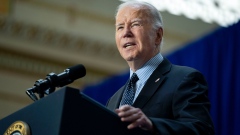Dec 12, 2022
Ontario's Staycation Tax Credit ends this month. Here's what you need to know
, BNN Bloomberg
Ontario’s Staycation Tax Credit, which offers money back for leisure travel accommodations within the province, is expiring at the end of this month.
The provincial government introduced the credit to boost domestic travel as hospitality and tourism operators recovered from pandemic losses.
Chris Bloore, president of the Tourism Industry Association of Ontario (TIAO), said the initiative is a much-needed economic incentive that sent the message that it was safe to travel and explore after two years of COVID-19 travel restrictions and border closures.
“It was really important to try and get people going travelling and supporting local businesses and operators,” he said in an interview.
With a few weeks left to take advantage, here’s an overview of what the tax credit offers, how to claim it and what’s next for the tourism industry’s COVID-19 recovery.
WHAT DOES THE TAX CREDIT COVER
Ontario residents can claim 20 per cent of their travel accommodation expenses with the tax credit, up to $1,000 per person or $2,000 per family.
That means an individual using the full amount of eligible expenses would get $200 back and a family would receive $400.
Stays at hotels, motels, lodges, resorts, campgrounds and similar accommodations are considered eligible expenses.
HOW TO TAKE ADVANTAGE
Residents can claim the credit on personal income tax returns for 2022, regardless of whether they owe income tax for the year. Anyone who resides in Ontario as of Dec. 31 can claim the credit for travel expenses on recreational trips taken between Jan. 1 and Dec. 31, 2022.
Receipts for claimed expenses must include the accommodation’s location, amount of money and GST/HST paid, date of the stay and name of the person who paid.
Camping might be out of the question for a December trip, but there are plenty of cold-weather options for overnight getaways.
Bloore encouraged people to take a weekend overnight trip this month, possibly to explore a smaller or remote community, where tourism operators and other businesses in retail and dining have been especially hard-hit during the pandemic.
“Our industry is definitely not out of the woods yet, so if people are thinking about, ‘I've got 20 days or so left in the year, maybe I’ll escape the city or do something fun,’ please do it. Please stay that extra night,” he said.
“It makes a huge difference, especially in our rural and northern economies.”
IMPACT ON BUSINESSES
It’s not yet clear how effective the tax credit has been at boosting local tourism as people have not yet filed their tax returns for the year.
The TIAO wrote to the provincial government asking for that the tax credit be extended into 2023, but the province has not said it plans to do so.
A spokesperson for the Ministry of Finance said in an email to BNNBloomberg.ca the tax credit was introduced to boost tourism, and “while many industries, including tourism, continue to absorb COVID-19-related impacts, tourism activity in Ontario recently reached its highest level since the onset of the pandemic.”
Bloore said he understands the government’s approach to wait for the data from 2022’s tax returns, despite his organization’s request to extend the offering after COVID-19 restrictions early in the year disrupted travel.
He said the industry is hoping for more support and a new strategy to encourage continued domestic tourism, especially with high cost of living and signs of potential economic downturn to come that could complicate the recovery.
“If we do have a sluggish economy and we do go into recession, we could be one of the few industries that are counter cyclical and actually grow, with the right investment and the right support,” he said.








